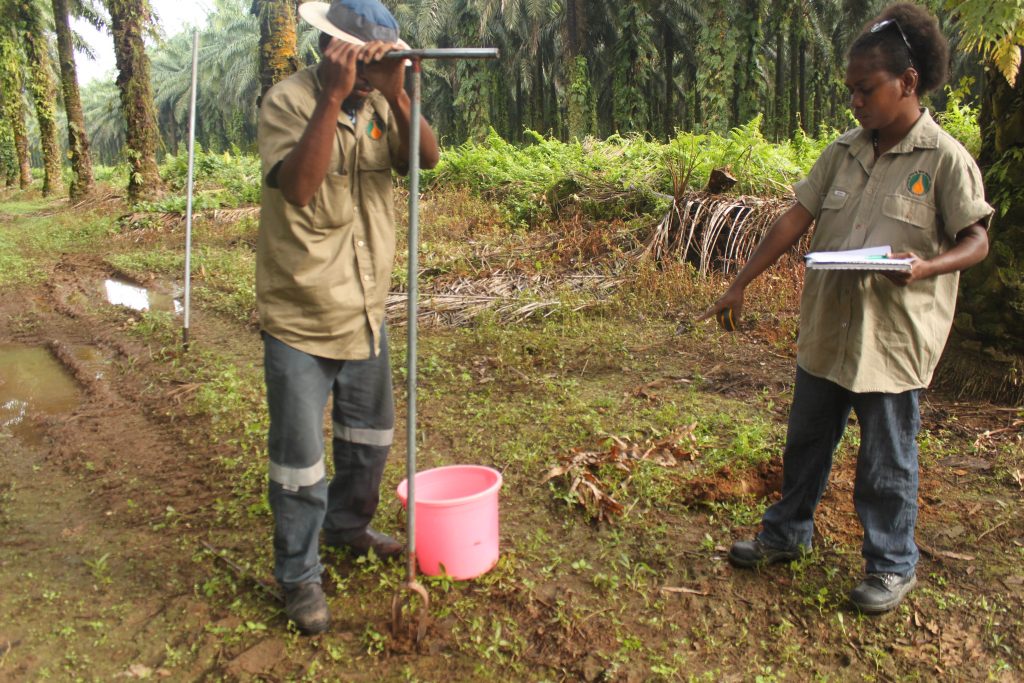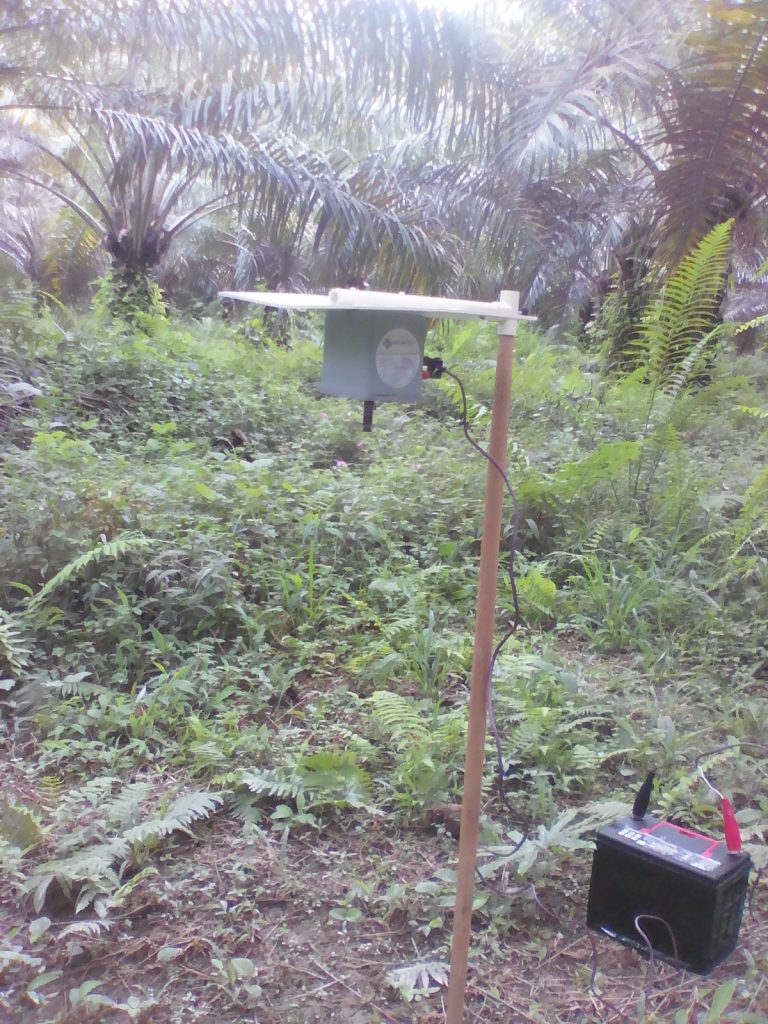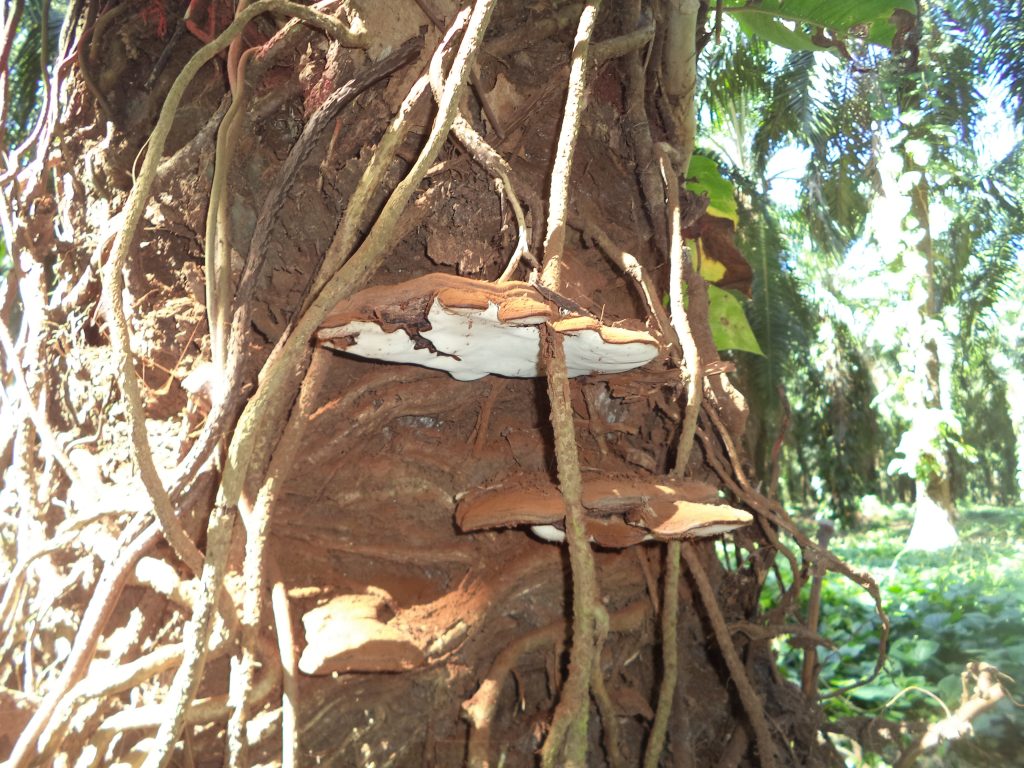
Basal Stem Rot disease caused by a fungal pathogen known as Ganoderma boninense is a devastating disease in oil palm in Papua New Guinea (PNG). The Papua New Guinea Oil Palm Research Association, (PNGOPRA) in the Plant Pathology Section within the past two decades, has based on this disease in terms of both the Ganoderma pathogen and the oil palm host. However, the environmental effect on the disease incidences has not investigated. Therefore, research into all environmental factors to be done to identify site factors that correlate with Basal Stem Rot prevalence.
The study site was conducted in West New Britain in which 30 New Britain Palm Oil Limited, (NBPOL) plantation blocks, and 10 replanted smallholder blocks selected for the study. Data collection included desktop surveys, field surveys, soil sampling, air sampling, and lab analysis measuring parameters of environmental factors. (topographical factors, soil factors, weather factors, oil palm attributes, soil fungal diversity and quantification of airborne spore inoculum)
Results from this study identified a positive correlation (r = 0.40) between wind direction and Basal Stem Rot incidences in Numundo and a positive correlation (r = 0.53) in the mycorrhizal fungi present in the soil. This study also confirmed the hypothesis that smallholder blocks have higher concentrations of airborne spore inoculum than the plantation blocks.
Currently, as an extension to this study, most factors are undergoing investigation in a more detailed methodology by comparing sites of high incidence and between newly replanted, middle-aged, and older oil palm block as well as verification of the results stated above. A better understanding of the environmental influence on Basal Stem Rot incidence will lead to improving current disease management practices for the oil palm industry in Papua New Guinea.


